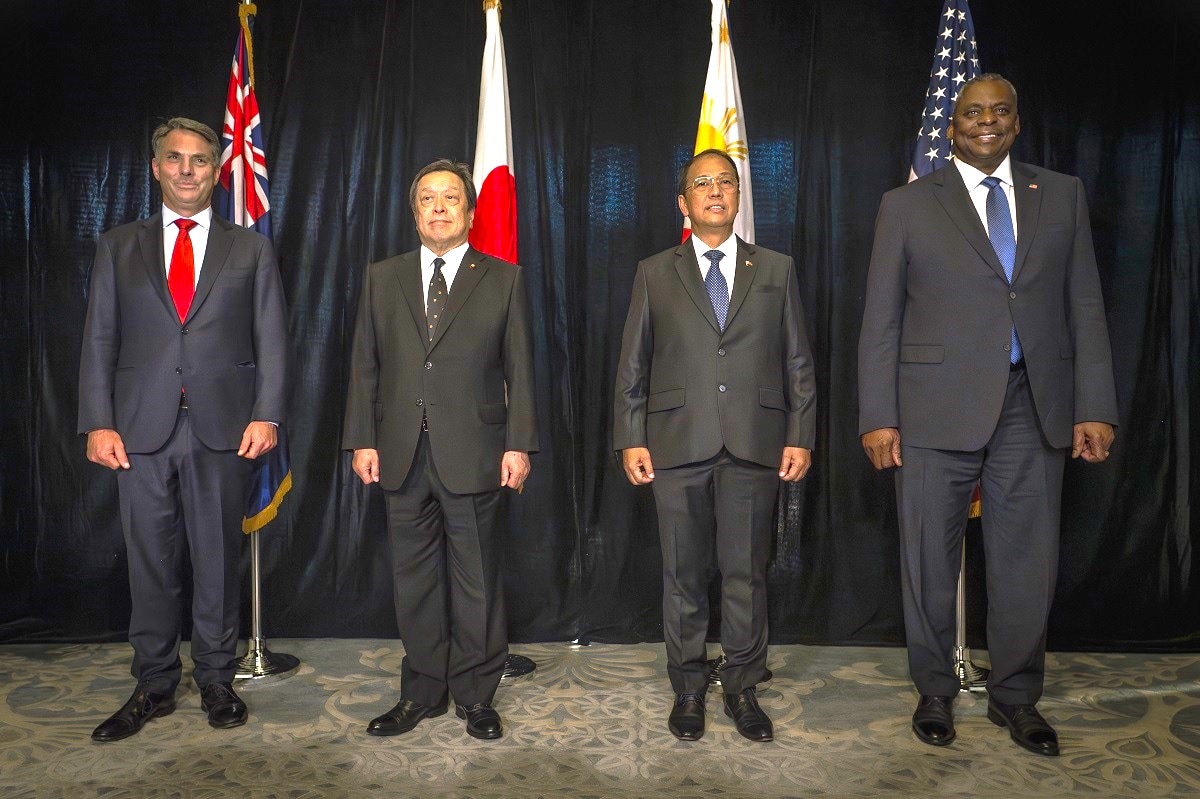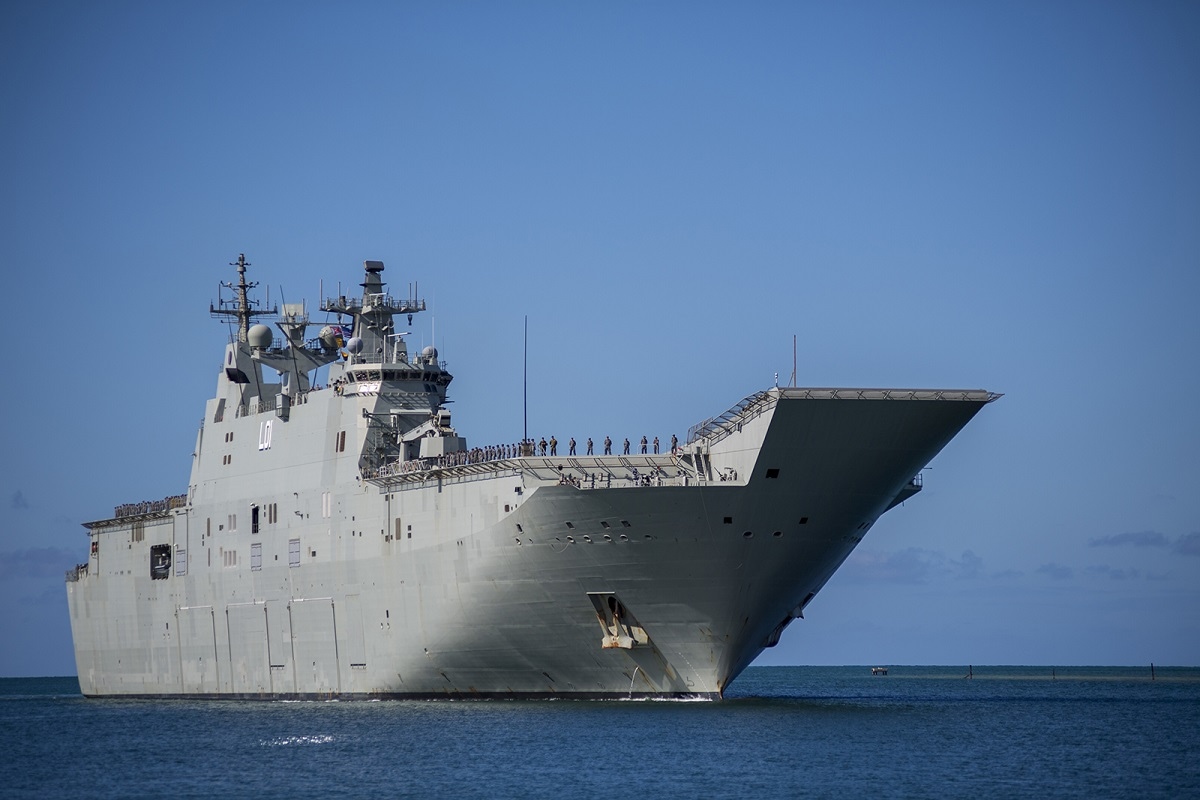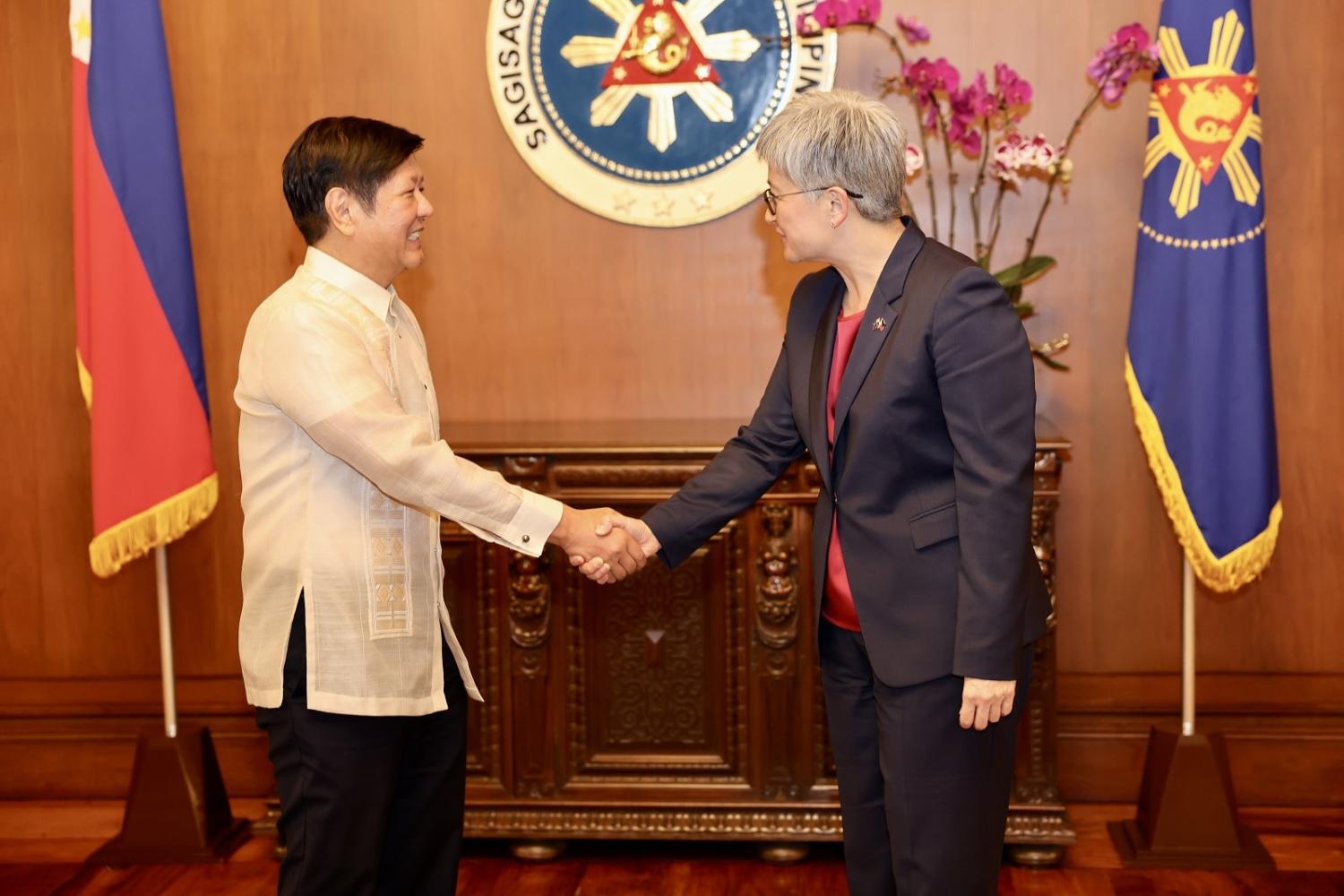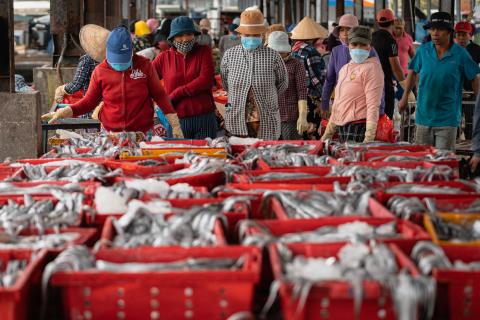Just months into office, Australian Deputy Prime Minister and Defence Minister Richard Marles visited Singapore for the Shangri-La Dialogue, where he made it absolutely clear that Southeast Asia will be “central” to Canberra’s foreign policy priorities. Earlier, Australia’s Malaysian-born foreign minister, Penny Wong, had visited neighbouring Indonesia, where she received a rockstar reception after vowing a new era of sincere and comprehensive strategic engagement.
Blessed with multiple Bahasa-speaking cabinet members, and acutely aware of the growing significance of the Association of Southeast Asian Nations, the Albanese government was primed for a major charm offensive from the get-go. Arguably, no ASEAN state better exemplifies Australia’s growing diplomatic success than the Philippines, which, under the Ferdinand Marcos Jr administration, has been fortifying ties with traditional allies amid rising tensions in the South China Sea.
Despite shared political values and relative geographic proximity, Australia-Philippines bilateral relations have yet to realise their full potential. While defence cooperation has been growing by leaps and bounds in the past decade, with the two sides recently conducting their biggest joint military drills yet with an eye on China, bilateral trade and investment relations need a major boost. Australian Prime Minister Anthony Albanese’s upcoming visit to Manila represents a historic opportunity to maximise a highly promising partnership.
It’s hard to overstate the depth of historical bonds between Australia and the Philippines, two fellow US allies in the Indo-Pacific. As early as the Second World War, Australian troops fought side-by-side with Filipinos against Imperial Japanese forces. In fact, Australia’s sacrifices, particularly during the Battle of Surigao Strait (1944), were essential to the eventual liberation of the Philippines under the command of US General Douglas MacArthur.
Throughout the Cold War period, the two sides largely interacted under the shadow of America, which relied on massive military bases across the Philippines to contain communist expansion in Asia. Bilateral Philippines-Australia relations, however, entered a new phase in the 1990s as both US allies began to chart more independent strategic paths.

Just a few years after US bases in the Philippines were closed, and shortly after China seized Manila-claimed Mischief Reef in the South China Sea, Manila and Canberra signed the Memorandum of Understanding on Cooperative Defence Activities. This provided a foundation for the establishment of the Joint Defence Cooperation Committee, which oversaw the implementation of a wide range of joint military operations.
Then came a major breakthrough, with Canberra and Manila negotiating a Status of Visiting Forces Agreement (SOVFA) to facilitate sustained defence cooperation and war games on Philippine soil. The Philippines-Australia SOVFA initially met stiff resistance in the Philippine Senate, which, having voted against American bases in the early-1990s, remained sceptical about the value of growing defence cooperation with yet another Western power.
But China’s occupation of the Scarborough Shoal following a months-long naval standoff with the Philippines in mid-2012 changed everything. Shortly after, the Philippine Senate overwhelmingly voted in favour of the SOVFA in a desperate attempt to constrain China’s aggression within the Philippines’ exclusive economic zone.
The value of the SOVFA soon became clear when it facilitated Australia’s humanitarian assistance and disaster relief operations after the 2013 Haiyan super typhoon, which devastated large parts of central Philippines. Meanwhile, the SOVFA also facilitated Australia’s growing participation (as an observer) in large-scale Philippines-US joint military activities, most notably the annual Balikatan Exercises.
The pact also paved the way for Australian defence aid to Manila, notably the transfer of three former Royal Australian Navy Balikpapan-class landing craft heavy ships to the Philippine Navy in 2016. By the mid-2010s, Australia doubled down on its strategic engagement with the Philippines, which audaciously took China to the international court over the South China Sea disputes.
In 2015, Australian Prime Minister Malcolm Turnbull visited Manila, where he signed the Joint Declaration on Australia-The Philippines Comprehensive Partnership in order to boost bilateral cooperation. Just two years later, Australia-Philippines relations reached a new milestone when Canberra provided real-time intelligence and offered special forces training to combat militant extremists during the Marawi crisis in southern Philippines.
Canberra’s assistance proved so vital that even the notoriously anti-West President Rodrigo Duterte publicly thanked Australia for “showing solidarity” and even personally boarded HMAS Adelaide, the Royal Australian Navy’s largest ship, during a goodwill visit to Manila in 2017. But it is Duterte’s successor who has accelerated bilateral defence cooperation in the past year.

Philippine President Ferdinand Marcos Jr’s decision to expand the parameters of the country’s Enhanced Defence Cooperation Agreement (EDCA) with the United States has accelerated military cooperation with other likeminded powers, most notably Australia. Despite describing China as the Philippines’ “strongest partner”, Duterte’s successor has also taken a far more uncompromising stance in the South China Sea.
Sensing a window of opportunity, Marles has visited Manila twice this year. The first trip came shortly after Marcos Jr greenlighted an expanded EDCA, and the latest came on the heels of Philippines-Australia Amphibious and Land Operations (ALON) as part of the Indo-Pacific Endeavour 2023 exercises near the South China Sea.
Crucially, this went hand in hand with joint Australia, Japan, Philippines trilateral patrols in the South China Sea, just as Manila pressed ahead with resupplying missions to the contested Second Thomas Shoal in defiance of Chinese blockades. Standing in solidarity with the Philippines, Marles has vowed more joint patrols in the future, as a parallel “Quadrilateral” alliance between Australia, the United States, Japan and the Philippines takes shape. In turn, the Philippines has openly backed – the only member to do so in ASEAN – the alliance between Australia, the United Kingdom and the United States (AUKUS) in order to keep China’s ambitions in check.
Marcos Jr, who personally observed the recent Philippines-Australia drills, has welcomed expanded military cooperation with Australia, vowing to discuss the “continuation of this kind of joint exercise to increase the capabilities again of our (forces)” in his upcoming meeting with Albanese in Manila.
By all indications, Philippines-Australia relations are reaching new heights, especially in maritime security cooperation. A truly comprehensive partnership, however, should entail a major boost to bilateral investment and trade relations, which remain relatively tepid. In 2021, two-way trade stood at AU$6.2 billion, compared to almost AU$18 billion for Vietnam and AU$24.6 billion for Thailand. Australia is also yet to play a central role in the development of big-ticket public infrastructure projects, especially in public transportation, where Japan and China are the main players. Albanese’s visit to Manila should not only reinforce booming defence ties but also consciously deepen bilateral economic linkages.

